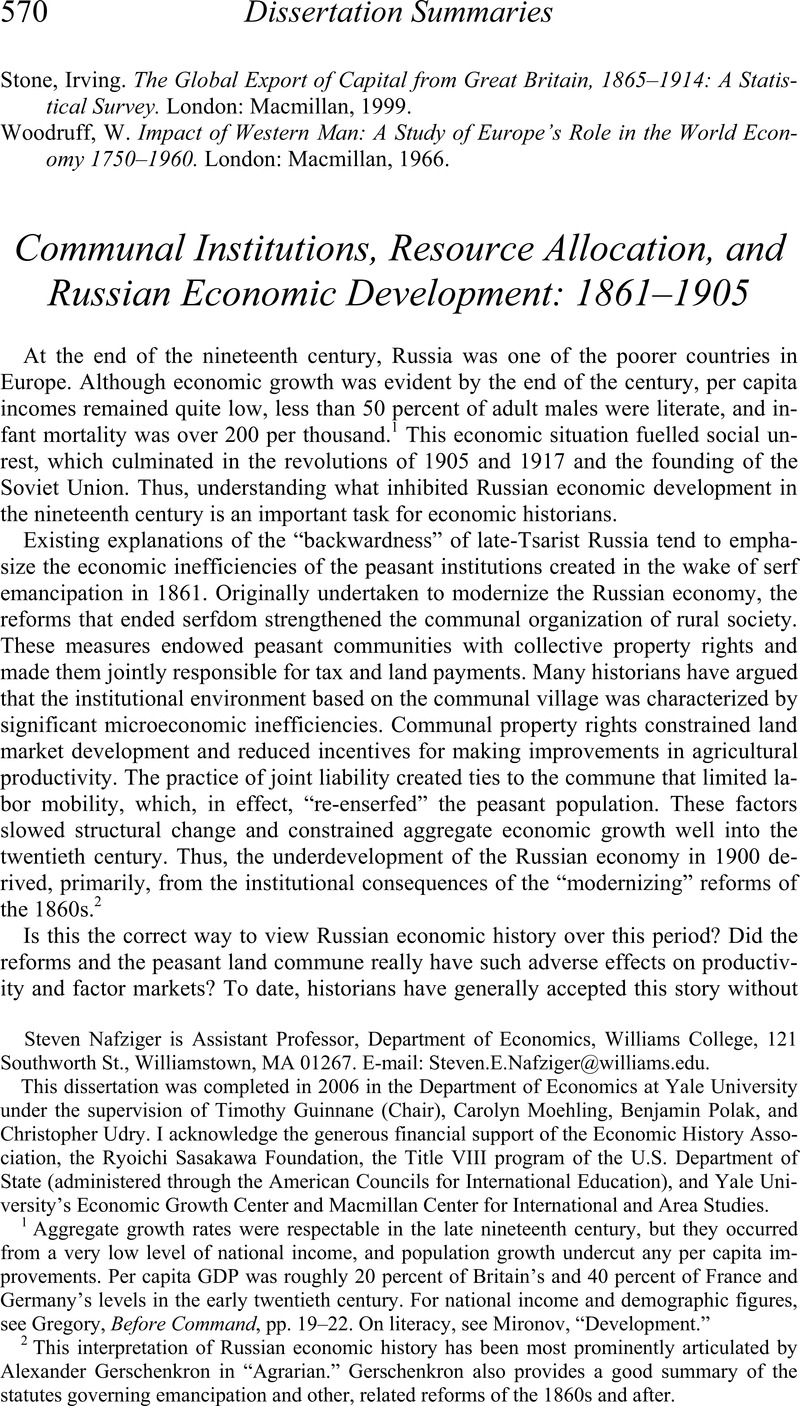Crossref Citations
This article has been cited by the following publications. This list is generated based on data provided by Crossref.
Castaaeda Dower, Paul
and
Markevich, Andrei
2013.
Land Tenure and Productivity in Agriculture: The Case of the Stolypin Reform in Late Imperial Russia.
SSRN Electronic Journal,
2016.
Two Roads Diverge.
p.
227.
Guimaraes, Bernardo
and
Sheedy, Kevin Daniel
2021.
Institutional Specialization.
SSRN Electronic Journal ,





